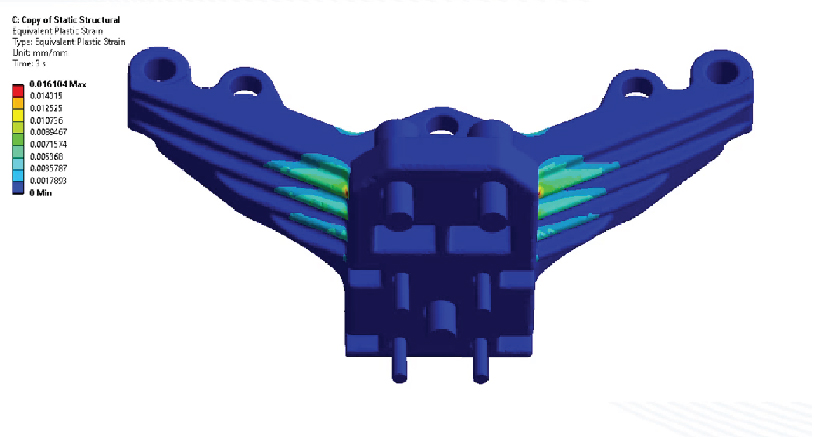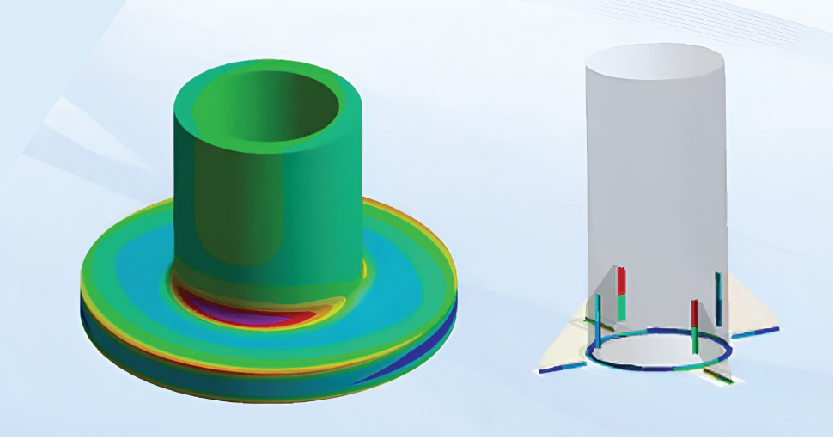
Fast strength evaluation with guideline-compliant verification according to the FKM standard. Full-surface strength verification of non-welded volume components according to FKM in compliance with guidelines. Strength verification of welds on shell and volume structures according to FKM in compliance with guidelines.
Identification of critical load cases through basic load case combinations involves analyzing different loading scenarios by combining simple individual load cases to determine the most critical conditions. This approach helps in identifying the worst-case load combinations that result in maximum stress or deformation, enabling engineers to focus on the most demanding operational conditions for design optimization and safety assessment.
The reduction of time for strength evaluations to a minimum, even for complex scenarios, involves optimizing simulation processes and leveraging advanced computational techniques. This can be achieved by using efficient meshing strategies, parallel processing, and automation tools to streamline the analysis of stress, fatigue, and deformation. Simplified yet accurate models, along with pre-defined material and load conditions, further expedite evaluations, allowing for faster results without compromising accuracy. These methods enable quicker decision-making in design and improve overall efficiency, particularly in scenarios involving complex geometries or multi-load conditions.
Relief of the user from manual inputs or error-prone formulas involves automating the data entry and calculation processes within simulations. By integrating predefined parameters, material databases, and standardized formulas, the system reduces the need for users to manually input values or derive complex equations. This automation minimizes human error, ensures consistency, and accelerates the simulation workflow. It also allows engineers to focus on higher-level decision-making and analysis, improving efficiency and reliability in design and evaluation tasks.
Automatic report generation on critically stressed locations in intermediate and final results involves the system identifying areas of high stress or potential failure during the simulation process. These locations are flagged and included in automatically generated reports, which highlight critical zones and provide detailed information on stress concentrations, deformation, and potential risks. This feature streamlines the analysis process, helping engineers quickly focus on critical areas of the design without manually reviewing all simulation data, thus improving decision-making and ensuring that high-risk areas are addressed promptly.

